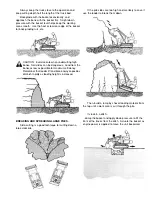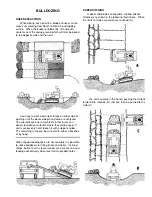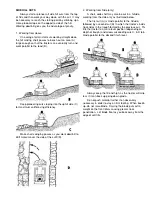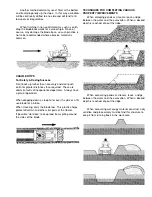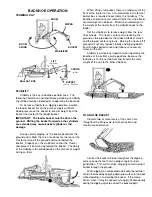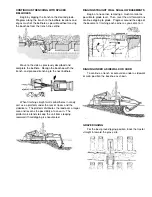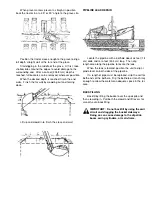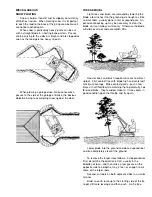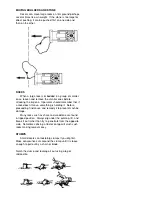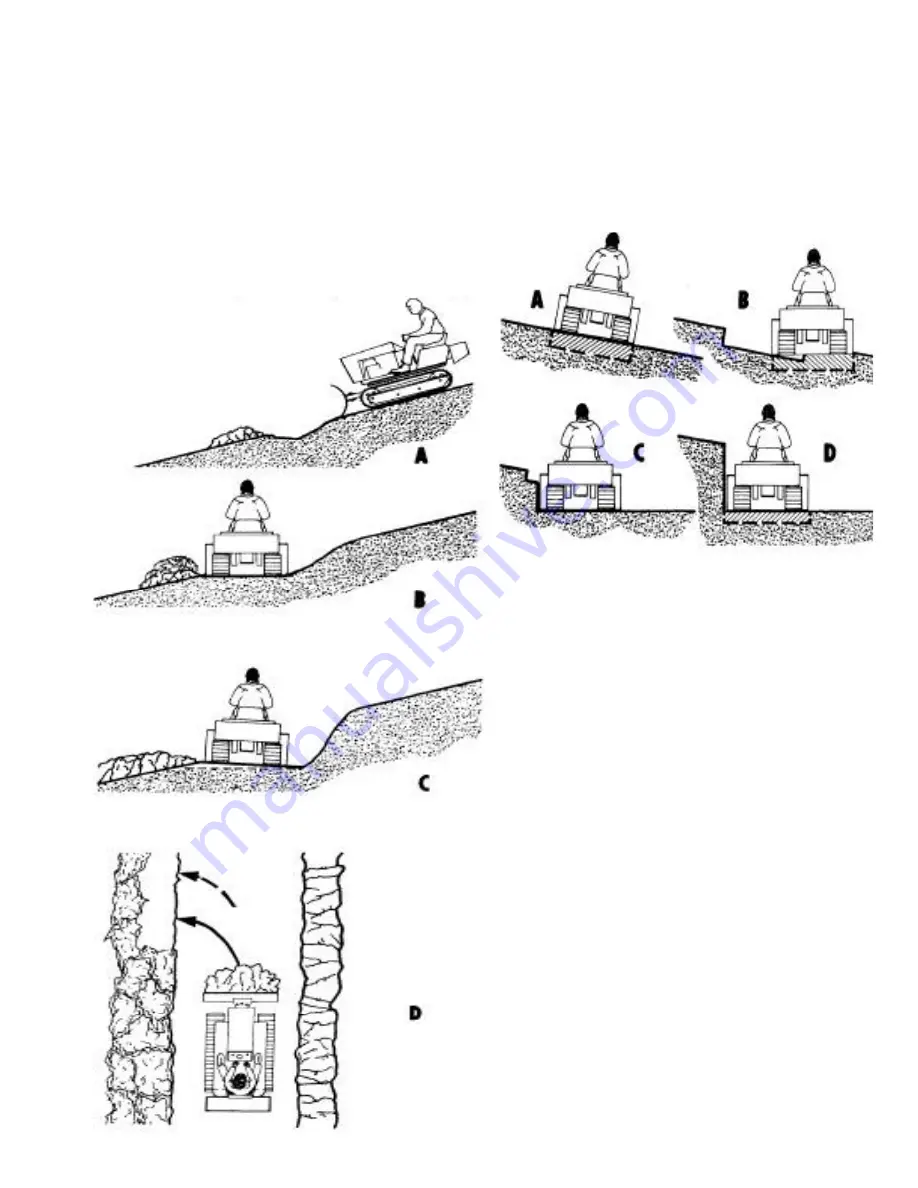
SIDE HILL CUTS
Always start or pioneer all side hill cuts from the top
of hills and then work your way down with the cut. It may
be necessary to reach the starting point by climbing up a
more gradual slope on the opposite side of the hill.
Working downhill gives you the advantage of gravity.
1. Working from above
On average terrain start cuts working straight down
the hill making short passes to bench out an area (A)
large enough so that the tractor can eventually turn and
work parallel to the road (B).
Keep pioneering cuts sloping into the uphill side (C)
for maximum earthmoving efficiency.
Make short swinging passes as you work downhill to
drift material over the side of the cut 9(D).
2. Working from Side (only)
A short, wide shelf may also be cut in a hillside,
working from the side only as illustrated below.
The first cut (A) is made parallel to the hillside,
followed by a second cut (B) in which the tractor’s inside
track rides in the trough formed by the previous cut. This
tilts the tractor to a more level position (depending on
depth of trough) and allows succeeding cuts C, & D to be
made parallel to the desired finish level.
Always keep the fill end high, as the tractor will mire
less if it can back up going down grade.
Do not push material further than absolutely
necessary in order to stay on firm footing. When backing
up, do not raise blade. Raising the blade puts extra
weight on the front idlers causing greater track
penetration. Let blade float as you back away from the
edge of soft fills.













